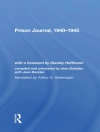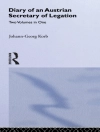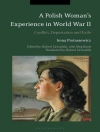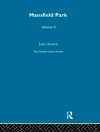Mary Wollstonecraft was born on 27th April 1759 in Spitalfields, London. Although her family had a comfortable income much was squandered by her father leading the family to become financially diminished. Wollstonecraft struck out on her own in 1778 and accepted a job as a lady’s companion. Frustrated by the limited career options open to respectable yet poor women, she nonetheless decided to embark upon a career as an author. At the time, few women could support themselves by writing. She learned French and German and translated texts. She also wrote reviews, primarily of novels, for Johnson’s periodical, the Analytical Review. Wollstonecraft also pursued a relationship with the artist Henry Fuseli. Boldly she proposed a platonic living arrangement with Fuseli and his wife. Fuseli’s wife was shocked and the relationship was severed. In December 1792 she left for France to view first hand the revolutionary events that she had just celebrated in her recent ‘Vindication of the Rights of Men’ (1790) and that had brought her immediate fame. France declared war on Britain in February 1793 and Wollstonecraft tried to leave for Switzerland but was denied permission. Despite her sympathy for the revolution, life for Wollstonecraft was very uncomfortable.Having just written the ‘Rights of Woman’, Wollstonecraft determined to put her ideas to the test. She alighted on and fell passionately in love with Gilbert Imlay, an American diplomat and adventurer. By now she was disillusioned by the Revolution’s path. She thought the republic behaved slavishly to those in power while the government was ‘venal’ and ‘brutal’. To protect Wollstonecraft from the prospect of arrest, Imlay made a false statement to the U.S. embassy in Paris that he had married her, automatically making her an American citizen. Wollstonecraft, now pregnant by Imlay, gave birth to her first child, Fanny, on 14th May 1794. She was overjoyed.The winter of 1794-95 was the coldest winter in over a century. Wollstonecraft and Fanny were reduced to desperate circumstances. Wollstonecraft now had to risk leaving France and did so on 7th April 1795. She sought Imlay out but he was impassive to her pleas. In May 1795 she attempted to commit suicide, but it is thought Imlay saved her life. But it was now certain that her relationship with Imlay was over. She attempted suicide for a second time but a passing stranger witnessed her jump into the Thames and rescued her. Gradually, Wollstonecraft returned to literary life, and to a relationship with William Godwin. Once Wollstonecraft became pregnant by him, they decided to marry so that the child would be legitimate. On 30th August 1797, Wollstonecraft gave birth to her second daughter, Mary. During the delivery the placenta broke apart and became infected. After several days of agony, Mary Wollstonecraft died of septicemia on 10th September 1797.
Mary Wollstonecraft
Letters written during a short residence in Sweden, Norway, and Denmark [EPUB ebook]
Letters written during a short residence in Sweden, Norway, and Denmark [EPUB ebook]
¡Compre este libro electrónico y obtenga 1 más GRATIS!
Idioma Inglés ● Formato EPUB ● Páginas 84 ● ISBN 9781787807020 ● Editorial Copyright Group ● Publicado 2019 ● Descargable 3 veces ● Divisa EUR ● ID 7098759 ● Protección de copia Adobe DRM
Requiere lector de ebook con capacidad DRM












